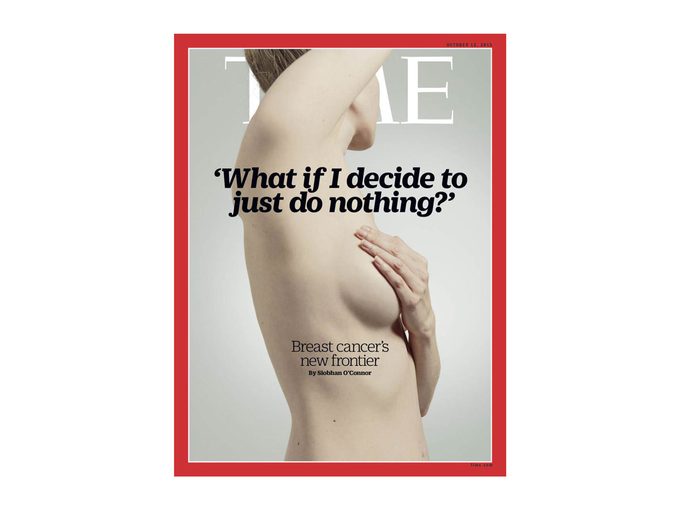Breast Cancer: What If You Did Nothing
Why some women with early-stage breast cancer choose to do nothing

The cover of this past week’s issue of TIME magazine features the torso of a woman, her hands shielding her breasts, and a single question: "What if I decide to just do nothing?" The question is jarring because we know what it’s referring to: the asker has breast cancer, and she wants to know if the best course of action is no action at all.
It’s a radical idea, to do nothing when faced with a breast cancer diagnosis, particularly this month, when we’re surrounded by pink products and encouraged to join the ‘fight’ to ‘beat’ breast cancer. And when we know that breast cancer is the most common cancer diagnosis in Canadian women, and that 5,000 women in this country die each year from the disease, it seems astonishing that a woman would choose to wait and watch. But as TIME author Siobhan O’Connor writes in her article, ‘Why Doctors are Rethinking Breast Cancer Treatment,‘ research suggests that some women with early-stage breast cancer are being over treated.
New research released in August brought this issue to public attention. The study, published in the journal JAMA Oncology, followed 100,000 diagnosed with ductal carcinoma in situ (DCIS), also known as Stage 0 breast cancer, for 20 years. Researchers discovered that no matter the course of treatment (lumpectomy or mastectomy, for example) the women had roughly the same chance of dying from breast cancer as the average woman does (though black women and women under 40 were at higher risk).
In her TIME article, O’Connor writes that advances in genetic testing and deeper knowledge of the ways in which different types of breast cancers operate mean women diagnosed with early stages of the disease may be able to avoid the often debilitating side effects of aggressive treatments. For example, a new study released last month suggests some women with low-risk breast cancer don’t need to undergo chemotherapy as part of their course of treatment. The study, published in the New England Journal of Medicine, used something called the Oncotype Dx test, which looks at genetics to determine how likely the cancer is to reoccur. Women who scored low on the test were treated with hormone therapy rather than chemo. When researchers followed up with the women five years later, they found that survival rate was 98 percent.
Of course, there’s no one-size-fits-all solution and less aggressive treatment isn’t the right choice for everyone. Family history, age, ethnicity and personal health all play a role in how a woman and her doctor decide to proceed once a cancer diagnosis is made.




